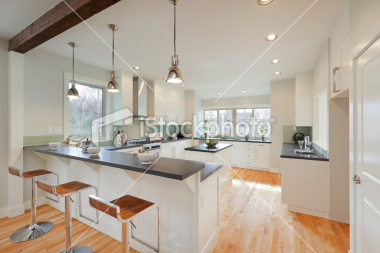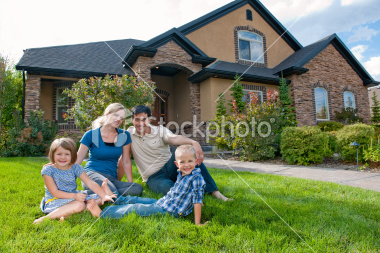Carbon Foot Print: How You Look At Your Home


Decreasing a carbon footprint can be helped by using sustainable products such as cork flooring and effectively managing renewable resources as illustrated in the pictured new growth in replanted clear cut area.
Carbon Foot Print Defined: From Wikipedia.com. The carbon footprint can be seen as the total amount of carbon dioxide (CO2 ) and other greenhouse gases emitted over the full life cycle of a product or service.
“The word that comes to mind when I think of Green Building as it relates to a ‘Carbon Footprint’, is holistic,” says Chad Oistad, General Manager of Overson Construction Incorporated. “We take into account everything from the origin of the building materials to the efficiency of the home when it is occupied.
“For example, a few of the things we take into account when creating a Carbon Footprint Sensitive design for a customer are:
♦ Lumber — how energy intense is the processing
♦ Shipping — where are the materials coming from
♦ Sustainable Lumber — using sustainable lumber or old growth trees
♦ Energy Efficient — how natural are the products - plastics are petroleum based and create a larger footprint just by being produced.
♦ Actual Mechanical Systems — how efficient is your furnace or air conditioner
♦ Appliances — are they energy efficient
♦ Insulation — are you using your heat efficiently
“Cumulatively,” says Oistad, “you are causing less stress on the earth. A good example of how we act on this as a contractor is to ‘fight the footprint’ by replanting trees through the Arbor Day Foundation. In addition, these days most lumber we use comes from managed forests that are almost like farming lumber. We use little if any old growth lumber. The processors we buy our lumber from are committed to replanting trees in a number that will offset the use of the lumber.
“In the case of building and living in a home, your carbon footprint has two phases,” says Oistad. “First the amount of energy it takes to produce, ship and assemble the materials that make up your house. The second is the amount of energy it takes to maintain the home in terms of energy for daily living, and maintaining it in terms of roofing, siding, etc.”
Carbon footprint building is a resource driven method of construction. While there are still homeowner preferences, how you acquire the building materials and the building technology you employ is as important as the feel and function of a home.
Most builders build in a similar fashion and try to avoid using delicate resources. The supply chain is such that, particularly framing lumber, comes from sources that are replanting as they harvest the trees. Forethought can affect many things – some good examples are:
♦ Flooring — sustainable such as bamboo, cork or linoleum (not to be confused with vinyl)
♦ Engineered Floors — uses less real wood than solid sawn
♦ Trim — can come from recycled flooring & barn timbers or glass tile form old bottles
♦ Appliances & Mechanical Systems — choose high efficiency
♦ Windows — choose Low-E argon gas filled
♦ Walls & Ceilings — use high quality, high r-value insulation
♦ Tankless Water Heaters — only heat water as needed
♦ Roofing & Siding — use non-throw away materials, like fiber cement siding and steel roofing







